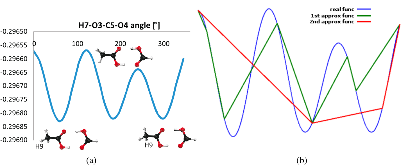Measuring the Error in Approximating the Sub-Level Set Topology of Sampled Scalar Data
- Lawrence Berkeley National Lab. (LBNL), Berkeley, CA (United States); National Lab. Astana (Kazakhstan)
- Univ. of California, Los Angeles, CA (United States). Dept. of Mathematics; Kazakh-British Technical Univ., Almaty (Kazakhstan)
- Lawrence Berkeley National Lab. (LBNL), Berkeley, CA (United States)
- Univ. of California, Davis, CA (United States). Dept. of Computer Science
This paper studies here the influence of the definition of neighborhoods and methods used for creating point connectivity on topological analysis of scalar functions. It is assumed that a scalar function is known only at a finite set of points with associated function values. In order to utilize topological approaches to analyze the scalar-valued point set, it is necessary to choose point neighborhoods and, usually, point connectivity to meaningfully determine critical-point behavior for the point set. Two distances are used to measure the difference in topology when different point neighborhoods and means to define connectivity are used: (i) the bottleneck distance for persistence diagrams and (ii) the distance between merge trees. Usually, these distances define how different scalar functions are with respect to their topology. These measures, when properly adapted to point sets coupled with a definition of neighborhood and connectivity, make it possible to understand how topological characteristics depend on connectivity. Noise is another aspect considered. Five types of neighborhoods and connectivity are discussed: (i) the Delaunay triangulation; (ii) the relative neighborhood graph; (iii) the Gabriel graph; (iv) the k-nearest-neighbor (KNN) neighborhood; and (v) the Vietoris–Rips complex. It is discussed in detail how topological characterizations depend on the chosen connectivity.
- Research Organization:
- Lawrence Berkeley National Lab. (LBNL), Berkeley, CA (United States)
- Sponsoring Organization:
- USDOE Office of Science (SC), Advanced Scientific Computing Research (ASCR); Ministry of Education and Science of the Republic of Kazakhstan
- Grant/Contract Number:
- AC02-05CH11231; 0115PK03029
- OSTI ID:
- 1505518
- Journal Information:
- International Journal of Computational Geometry & Applications, Vol. 28, Issue 01; ISSN 0218-1959
- Publisher:
- World ScientificCopyright Statement
- Country of Publication:
- United States
- Language:
- English
Similar Records
A Mountaintop View Requires Minimal Sorting: A Faster Contour Tree Algorithm
The graph-representation approach to topological field theory in 2 + 1 dimensions













